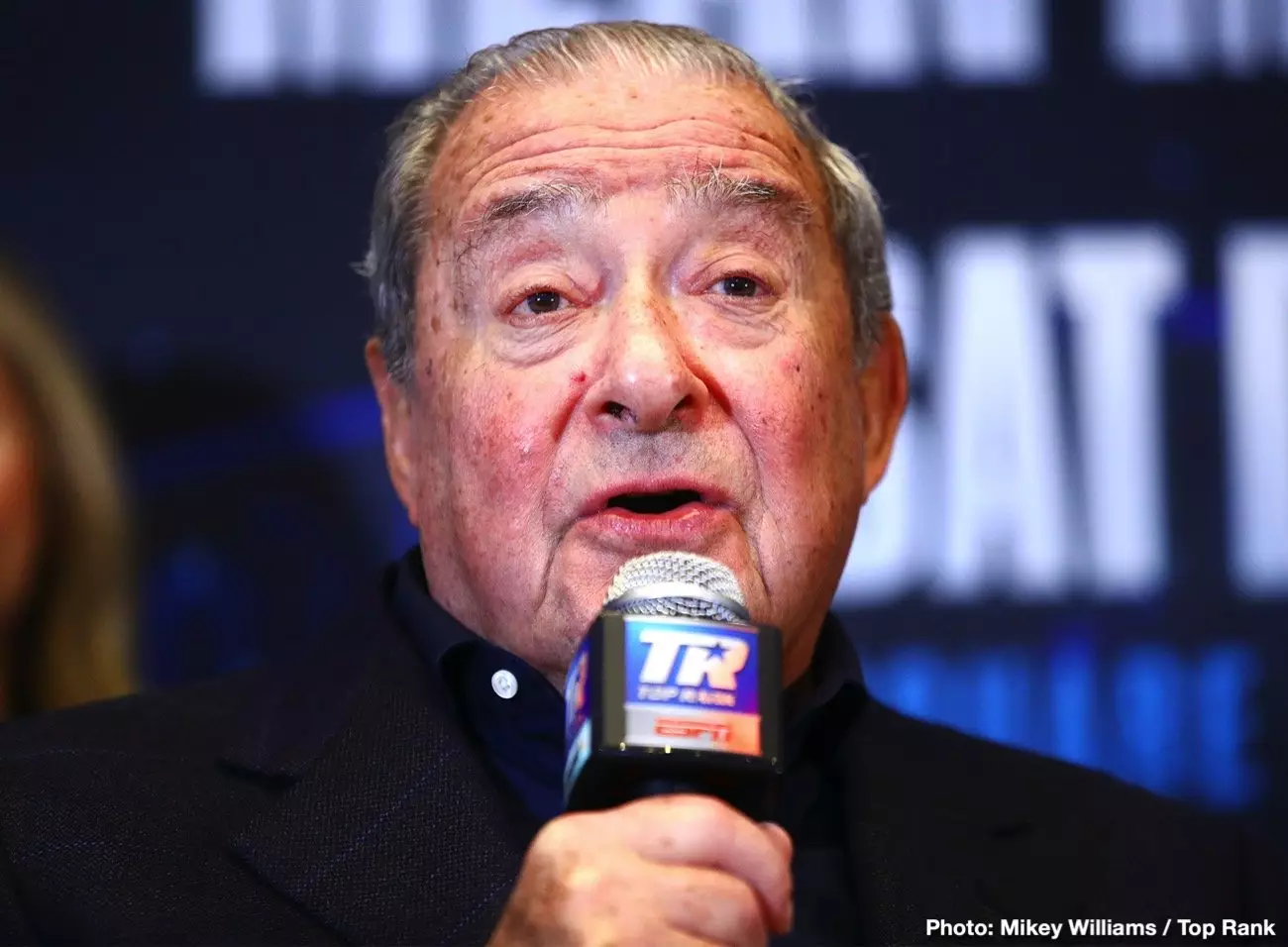As the boxing world gears up for the March 15th face-off between WBO light welterweight champion Teofimo Lopez and former IBF champion Subriel Matias, discussions are swirling around the potential placement of this matchup on pay-per-view (PPV) platforms. Bob Arum, the veteran promoter from Top Rank, has voiced his skepticism about using PPV, citing piracy issues and the fighters’ limited drawing power. This situation begs a deeper examination of both fighters’ market appeal and the changing landscape of boxing promotions.
Teofimo Lopez, despite his accolades as a two-division world champion, has struggled to maintain a fanbase following his loss to George Kambosos Jr. Many blame this decline on inconsistent performances and an inability to connect with a broader audience. Lopez’s record stands at 21 wins and 1 loss, with only 13 knockouts, raising questions about his knockout power potentially diminishing his allure as a PPV star. Simultaneously, Subriel Matias, with a record of 21 wins and 2 losses, is known for his punching power but lacks the star power usually required to make a PPV event successful. The reality is stark: both fighters remain on the peripheries of mainstream recognition, making significant PPV sales unlikely.
Arum’s concerns go beyond just piracy; they reflect a broader problem in boxing where the relevance of PPV is diminishing. Traditionally, only matchups featuring high-profile fighters commanded breaches to traditional viewership. However, the current trend suggests that promoters frequently miscalculate the draw power of their events, leading to a growing disconnect between audience expectations and the reality of match appeal. The challenges don’t solely derive from piracy; there’s a genuine apathy brewing among fans when promotions push fighters prematurely into the PPV arena without having established themselves adequately.
Compounding the issue is the economic impact that piracy possesses on promotional ventures, as highlighted by Arum’s apprehensions. While piracy steals from potential profits, the larger issue is that many promoters struggle to foster genuine interest in bouts. Moves to feature fights on PPV platforms that lack critical appeal can backfire spectacularly—cases like Gervonta Davis serve as reminders of what happens when fighters are thrust into the limelight too soon. Davis faced low engagement during early PPV appearances due to a mismatch between his opponents and audience expectations.
In light of these issues, it may be prudent for promoters like Arum to reconsider their strategies and start placing bouts like Lopez vs. Matias on traditional platforms such as regular ESPN. By doing so, they could foster a connection with fans that may pay dividends in the future. The challenge remains: how can promoters recalibrate to align their offerings with audience interests, thereby revitalizing enthusiasm and restoring the vibrancy of live boxing? The landscape is changing, and the industry must adapt or risk further alienation from its core fanbase.

